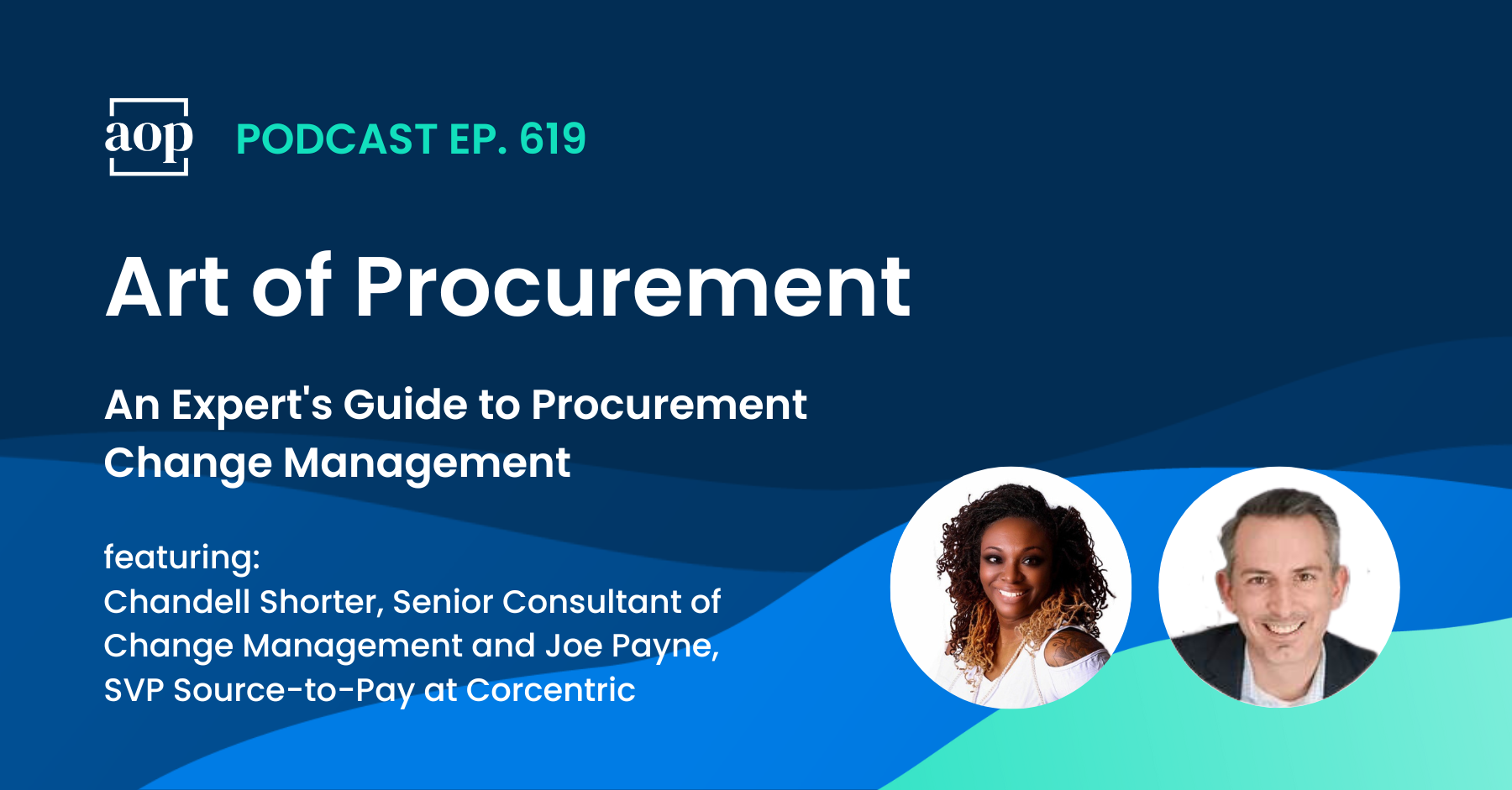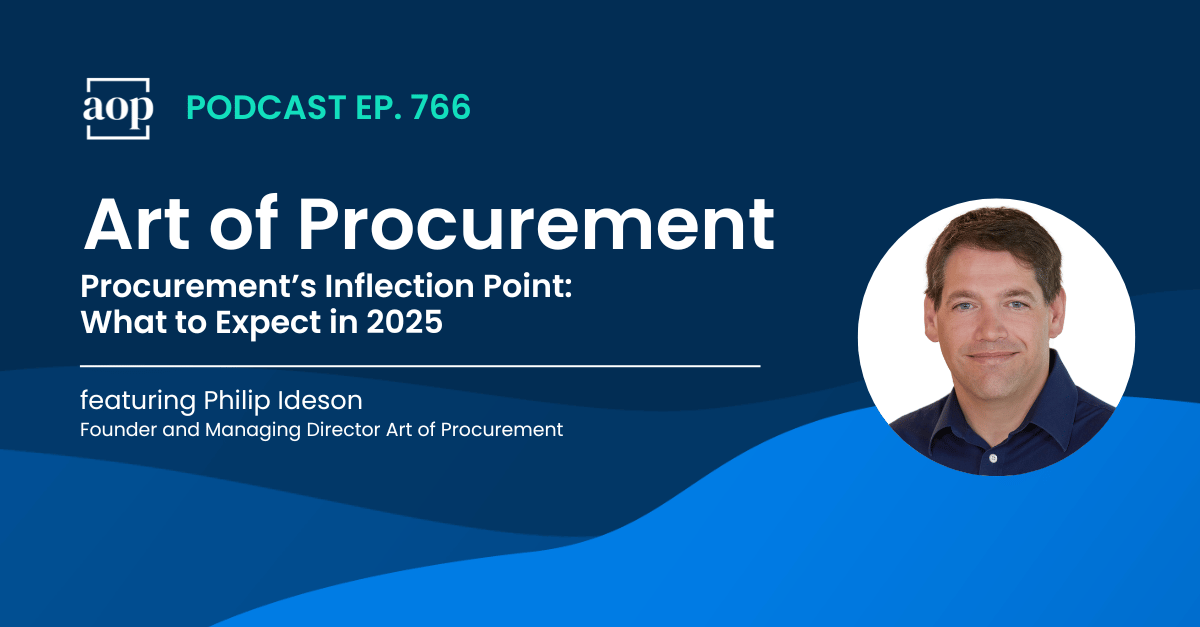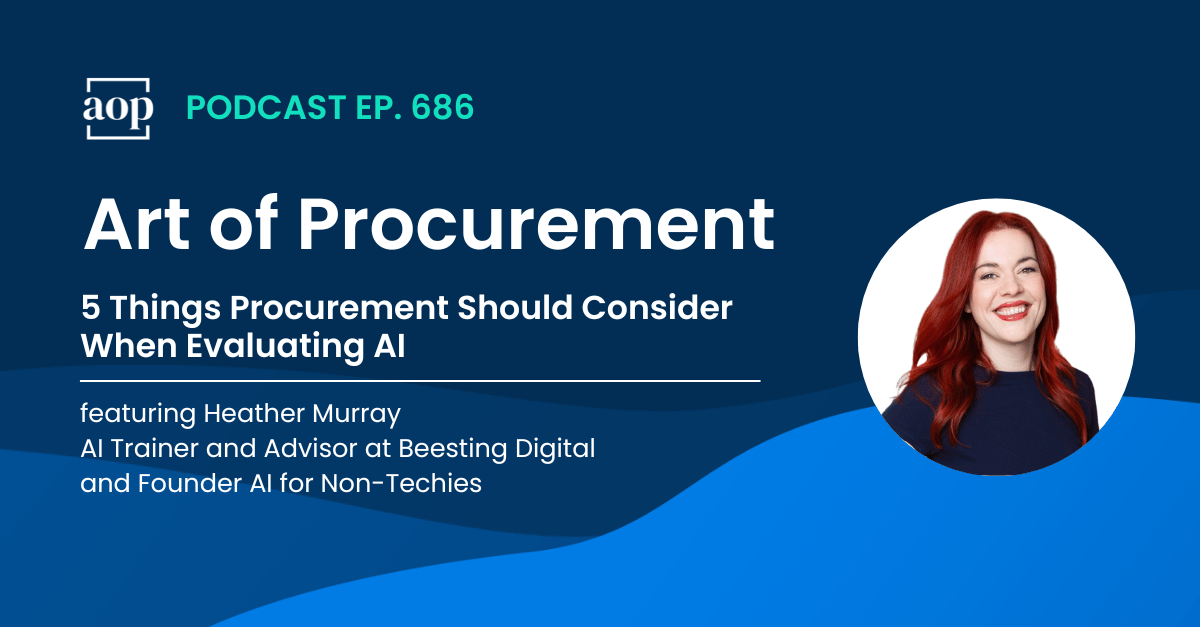
“Yes, change is hard to manage and process at any level which is why I always recommend that you give change in bite-sized pieces. Bring people along the way.” —Chandell Shorter, Senior Consultant of Change Management, Corcentric
Change management is a complex process that can cause many people to tense up just by hearing the phrase. It can be destabilizing and disruptive, but it’s also ultimately unavoidable, especially for procurement leaders who play a pivotal role in driving change initiatives.
In this episode, based on an AOP Live session, we heard from Chandell Shorter, Senior Consultant of Change Management, and Joe Payne, SVP Source-to-Pay both at Corcentric, about how procurement can address common challenges to change management – like attitudes of resistance or lack of buy-in at the executive level – and how they can set themselves up for a successful change management project.
Here are some of their most notable takeaways for procurement:
1. Explain the “why” behind the change
Transparency is key in any change management project. Not knowing the “why” behind the change – or worse, not trusting or believing the “why” that’s being communicated – is one of the surest paths to resistance and failure to adopt.
Procurement leaders should emphasize the “why” behind the change and articulate how it aligns with the organization’s goals and vision. Address the “What’s In It For Me?” (WIIFM) aspect for individual team members. Demonstrating how the change positively impacts their work, growth, and career prospects can alleviate concerns and resistance. As Chandell said, “In an environment now where everyone is hypersensitive to the market and their jobs and the competitive nature of the industry, people really want to understand the why.” And they want to hear it in an authentic way that they believe, trust, and can support.
2. Get out of your “procurement bubble”
As Joe put it, procurement “tends to be in our own bubble. We think it is very logical to say, ‘This is best for the company. It should be best for everyone in the company.’ But other folks have different priorities.” Procurement needs to actively work to understand those priorities and align their change management plan with what other teams want or need to achieve. This is fundamental to any P2P transformation.
3. Prioritize sponsorship from the beginning
When leaders visibly endorse and actively participate in change, it sends a powerful message to the rest of the organization that this is something worth embracing. But the buy-in must also be authentic – not just a “passive aggressive thumbs up,” as Joe put it – to lend credibility to procurement’s efforts and decrease the likelihood of resistance.
Getting sponsorship from a single leader or company visionary is just as important as generating buy-in from an executive committee or group of department leaders. All of these cohorts should be continuously communicating the same positive, value-driven messaging around the change so there is consistency and repetition that permeates the organization with reassurance at every level.
4. Get in the “spirit” of change
Chandell and Joe made a great point when they said that the success or failure of a change management initiative has a lot to do with the way teams and individuals perceive the change and how that change is communicated to them. This is especially key when procurement is faced with resistance.
If the change is “in the spirit of innovation and making things easier, better and more efficient, it’ll get more support and be more successful,” said Joe.
On the other hand, if change management is rolled out to push compliance or focus only on spend, resistance will likely fester and grow, affecting the success of the whole program.
5. Add change management skills to talent management
“Everyone has to be change agents,” said Chandell, for any transformation to be successful and lasting. She recommends a formal process for all leaders where change management as a competency is measured and developed through Human Resources. “Leaders have to be agents for change,” she said. “They have to be able to ensure that they are there to help people move through the change curve, especially at the project level when it is very focused change.”
6. Break change management down into more digestible chunks
Teams and individuals are always able to move through the change curve better when they don’t feel like the company in general – or procurement specifically – has dropped a “change bomb” on them all at once. Chandell recommended breaking down a change program into bite-sized chunks that lead people through change in a more manageable way, giving them time and space to adjust as new processes, technologies, or skills are introduced. Again, she said, this skill of introducing change in stages or chunks is a competency that all leaders should invest in developing and that HR should support.
7. Create an “early warning system” to monitor change
When change at any level has been implemented or adopted, it can be tempting to mark the project ‘done’ and just move on. But it’s important to put measures in place to monitor it over time, perform quality checks, evaluate for any resistance, and measure adoption. Develop an ‘early warning system’ by holding focus groups, creating feedback loops, or doing regular check-ins to identify what’s not working so you can present some new tactics to turn things around.
Joe recommended looking beyond the numbers when monitoring adoption: “From a numbers perspective, you might actually have a really good outcome, but people are not feeling great about what that outcome is, so getting the qualitative metrics established as well as the quantitative are critical to what comes after the initial change.”
8. Evaluate your own attitude toward change
Some people will say, “I just don’t like change,” without understanding where the discomfort comes from. If you can identify with this attitude, Chandell recommended writing down all the questions you have that will help you analyze the root of those negative feelings and, hopefully, help you move past them. Questions like, “Am I nervous about it? Am I in the middle and just need more information? Or do I feel really informed but just have a couple more questions?” The most important thing is to be honest with yourself about why you do or don’t like change, and within that awareness you can begin to find your own self-empowerment and tools to help you navigate the change curve with less anxiety.
Most procurement leaders deal with change in some form or another on a weekly or even daily basis. And procurement’s role in the change management process is pivotal. By approaching change management as a formal discipline that requires a very specific set of skills and tactics, procurement can be the rising tide that lifts all boats and lead the business successfully through the change that we all know is inevitable.
Listen to the Conversation
Subscribe to Art of Procurement
Apple | Stitcher | iHeart Radio | Email
Links & Resources
- Chandell Shorter on LinkedIn
- Joe Payne on LinkedIn
- Watch the Webinar on Demand






